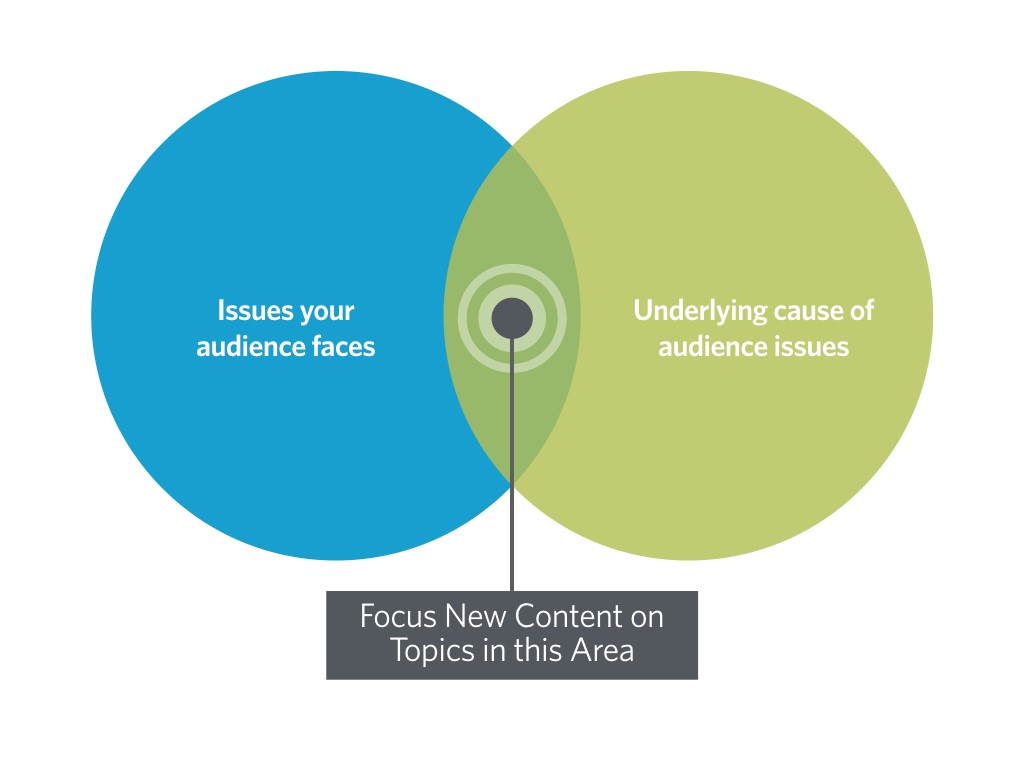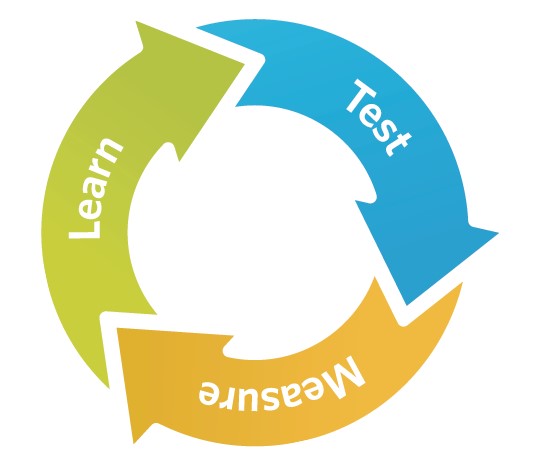8 Ways Your Content Marketing Is Failing
By Elizabeth Harr, Hinge

Creating and executing effective content can help your customers better understand the issues they face. Done right, it’s also a significant value-add to your marketing efforts — and a proven way to convert prospects into customers.
That said, not all content is equally effective. In this post, I actually want to share some of the most common ways content can fail. In this case, failure doesn’t necessarily mean content that is poorly written or designed; rather, it’s content created and disseminated without a clear strategy.
1. Content That Isn’t Relevant To The Customer
The most frequent reason that content fails is when it’s not important or relevant to the customer.
As shown in Figure 1, effective content needs to focus on topics that are both of interest to your customers and aligned with your organization’s key services or products — a “sweet spot” illustrated in Figure 1. Here are several criteria to consider when choosing your topics:
- Relevance to your customer and your services
- Lack of a consensus on the solution
- Topics that are not likely to go away in the short-term
- Issues that are not already “owned” by a competing firm
 |
|
Figure 1. Where to target new content |
2. Content That Is More Marketing Than Educational In Nature
Most people don’t want to be sold or marketed to until they’re ready thank you very much. But everyone has specific topics they’re interested in and want to learn more about. They may search the web for answers, but what they want even more is to find trusted, accessible sources of information. Creating relevant content addresses this need, and also can help customers vet you as a potential vendor. In fact, in a survey we conducted of professional services buyers, 23.5 percent rule out potential vendors simply because of poor quality content.
If a customer gets the sense that your content is merely marketing, they will probably keep looking for more objective information. However, by creating content that is clearly focused on sharing information (as opposed to selling product), people will be more likely to open your emails, visit your website, or sit in on a webinar.
3. Content That Doesn’t Consider How Your Customer Wants To Learn
To win new business, you have to bring prospects along on a journey to learn about your organization. To help them on this process, you need a variety of content that is relevant, no matter where they are in their journey.
Think of the classic sales funnel: as you begin a relationship with a customer, you need to keep your marketing broadly focused so that you can attract the maximum number of interested parties. Then, as they begin to engage with you at more depth, you need content that they will see as more specialized and valuable — and for which they will share contact information. As they move further into the relationship, you can share even more valuable information — perhaps in the form of webinars, white papers or executive guides.
4. Content That Exists Only On Your Website
For an effective content marketing strategy, you need to do more than just post your content on your website. At minimum, social media channels where your customers are networking should be a home for your articles and blogs. This is important because, according to another survey we conducted, nearly 60 percent of buyers check you out on social media as they’re deciding whether to do business with you. The more you promote your content via social media, the more prospective customers will see it — and over time, come to recognize your organization for its quality content and expertise.
You should also consider pursuing publishing opportunities your customers read – or where your competitors are placed. Having someone else stand behind your expertise goes a long way in convincing your audience that you are worth their time.
5. Content That Customers Can’t Easily Find
Even the most thoughtfully written and produced content will fail if customers never find it in the first place. Therefore, before you produce the actual content, do some research about which keyword phrases customers search for. By using those keywords in your content’s headlines and body copy, the content will appear higher in their searches.
Remember that when deciding on which keyword phrases to use, you should find ones that are relevant to the topic, and that your organization can rank for. If you’re new to the process and strategy of selecting keyword phrases, you may want to check out this article.
6. Content That Is Random Or Ad Hoc
Instead of having people simply write about their favorite topics, have them develop content that fits in strategically with your organization’s marketing priorities.
You should start by building an editorial calendar around the strategic keywords that you want to be found for. Ideally, the keywords should be tied to particular service areas or types of consultation that you want to promote in a given quarter. By creating and adhering to a content calendar, you will help your customers know what new content to expect, and also help your content writers focus their energies strategically.
7. Content That’s Inconsistent
Consistency is vital to credibility, so be sure to develop content standards and styles that you can live with, and then enforce them as new content is created, no matter who in your organization creates it.
 |
|
Figure 2. A continuous improvement model for content creation |
8. Content That’s Not Being Measured
Finally, content fails when you have no idea whether it’s performing or not. As shown in Figure 2, content marketing works as a virtuous cycle, in which you continually test your content, measure how it’s performing, learn from what works, and then factor those lessons into the next round of content. For best results, your metrics regarding your content should be:
- continuously available
- fairly objective
- relevant to your business
- easy to monitor
By avoiding these common pitfalls as you’re developing and sharing new content, your organization can improve how it meets your customers’ need for information on essential topics. More importantly, you also will convey a level of expertise and accessibility that will make them want to do business with you in the future. Best of luck on your journey!
About The Author
Elizabeth Harr, Partner at Hinge, is an accomplished entrepreneur and experienced executive with a background in strategic planning, branding and growth for professional services. Elizabeth cofounded a Microsoft solutions provider company and grew it into a thriving organization that became known for its expertise in Microsoft customer relationship management.
